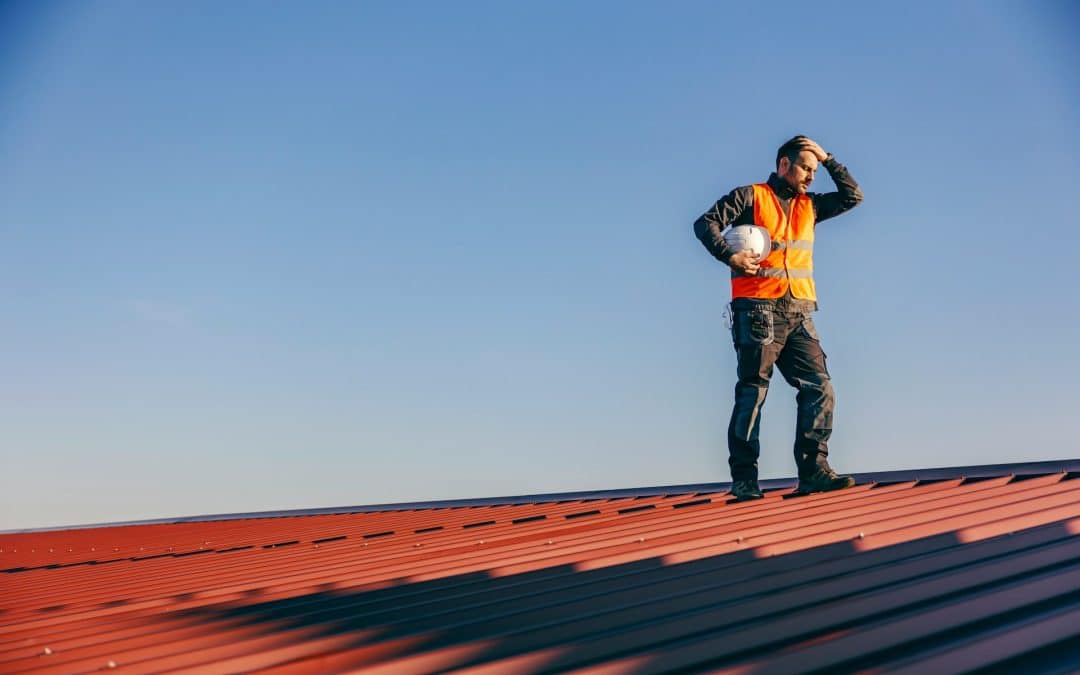Taking care of your roof is one of the most important things you can do to protect your home. Your roof shields you from rain, wind, and sunlight, keeping your family safe and comfortable. Regular roof maintenance helps avoid bigger problems and saves money in the long run.
Ignoring your roof can lead to serious damage, including leaks and structural issues. Water getting through your roof can cause mold and rot, not just in the roof but inside your home, too. Preventative maintenance checks for small issues before they become big headaches.
In this article, we will look at why preventative roof maintenance matters, spot common roof problems and share tips on how to maintain your roof yourself. We’ll also cover when it’s best to call in a pro to ensure your roof stays in great shape.
Why Preventative Roof Maintenance Is Important
Preventative roof maintenance is crucial for keeping your home safe and sound. Regular checks and minor repairs can avoid extensive damage that could cost you a lot more to fix down the road. When you keep up with maintenance, small problems like loose shingles or minor leaks get fixed before they turn into bigger issues.
Maintaining your roof helps extend its lifespan. A well-kept roof can last many years longer than one that’s neglected. Regular maintenance involves removing debris, checking for damage, and cleaning gutters. This regular care keeps your roof in good shape and ready to protect your home through all seasons.
Another important reason for preventative maintenance is to save money. Repairing a small leak or replacing a few shingles costs much less than fixing extensive water damage or even replacing your entire roof. Preventative maintenance also keeps your roof warranty valid, as some manufacturers require regular upkeep to honor their guarantees.
Common Signs Your Roof Needs Attention
Understanding the signs that your roof needs attention helps you catch problems early. Here are some common indicators to watch for:
1. Missing or Damaged Shingles: Look for shingles that are curled, cracked, or missing. These are signs that your roof may need repair. Damaged shingles can’t protect your home effectively and can lead to leaks.
2. Leaks and Water Spots: If you notice water stains on your ceiling or walls, your roof may be leaking. This is a serious issue that needs immediate attention to prevent further damage to your home’s interior.
3. Granules in Gutters: When you’re cleaning out your gutters, check for granules from your shingles. If you find a lot, it’s a sign your shingles are deteriorating and may need to be replaced soon.
4. Sagging Roof Deck: A sagging roof line is a clear sign of structural issues and can mean your roof has severe damage. You should call a professional right away if you notice any sagging.
5. Moss and Algae Growth: While a little moss might seem harmless, it can trap moisture against the roof surface and lead to damage. Cleaning moss and algae growth ensures your roof stays in good condition.
Regularly checking your roof for these signs can help you address issues promptly, keeping your roof and home in top shape.
DIY Maintenance Tips for Homeowners
Maintaining your roof doesn’t have to be complicated. With a few simple steps, you can help ensure your roof stays in great shape. Here are some easy DIY tips for homeowners:
1. Clean Your Gutters: Clogged gutters can cause water to back up and damage your roof. Make sure you clean out leaves, dirt, and other debris from your gutters regularly. This helps ensure proper water flow during rainstorms.
2. Trim Overhanging Branches: Branches that hang over your roof can scrape the shingles and drop leaves that clog your gutters. Trim back any branches that are too close to keep your roof clear and undamaged.
3. Inspect Shingles and Flashing: Regularly check your shingles and flashing for signs of wear or damage. Look for loose, cracked, or missing shingles and ensure that the flashing around chimneys and vents is secure.
4. Remove Debris from the Roof Surface: Keep your roof free of leaves, sticks, and other debris. This helps prevent mold and rot, which can damage the shingles and roof structure.
5. Check for Moss and Algae: If you see moss or algae growing on your roof, remove it with a moss remover solution. Moss can hold moisture against the roof, leading to damage over time.
6. Examine the Attic: Look in your attic for signs of leaks or water damage. Check for damp spots or mold, which can indicate a problem with your roof’s integrity.
Following these simple maintenance tasks can help keep your roof in good condition. If you encounter bigger issues or feel unsure about a task, it’s best to call a professional for help.
When to Call a Professional Roofer
While DIY maintenance is helpful, some situations call for a professional roofer. Knowing when to seek expert help can save you time, money, and hassle. Here are some instances when you should call a pro:
1. Major Leaks: If you find water dripping from your ceiling or large water stains, it’s time to call a professional. Major leaks can cause significant damage quickly, requiring expert repair to prevent further issues.
2. Storm Damage: After a severe storm, check your roof for damage. If you notice large areas of missing shingles, broken flashing, or punctures, you should contact a roofer to assess and fix the damage.
3. Structural Issues: If you see any sagging in your roof or feel your home’s structure is compromised, don’t wait to call a professional. These signs indicate serious problems that need immediate attention.
4. Extensive Shingle Damage: If more than a few shingles are damaged or missing, it’s best to have an expert evaluate the situation. They can determine if you need repairs or a full roof replacement.
5. Persistent Mold or Algae: If moss or algae keeps coming back despite your efforts to remove it, call a roofer. They can apply treatments and ensure your roof is properly protected against future growth.
6. Unclear Issues: If you’re unsure about a potential problem or don’t feel comfortable inspecting your roof, a professional can help. They have the experience needed to identify and fix issues you might miss.
Calling a professional ensures that your roof is properly taken care of and helps prevent small problems from becoming major repairs.
Conclusion
Regular roof maintenance is key to protecting your home and saving money on repairs. By keeping an eye on common signs of damage and taking simple DIY steps, you can help extend the life of your roof. However, it’s important to know when to call a professional roofer to handle more serious issues. Regular inspections and timely repairs can make a big difference in maintaining a strong and durable roof.
If your roof needs expert attention or if you’re unsure about its condition, look no further than Mike Huddleston Roofing Systems. Our team is ready to provide professional service and installation for any roofing in Georgetown. Don’t wait until it’s too late—get in touch with us today to keep your home safe and secure.

